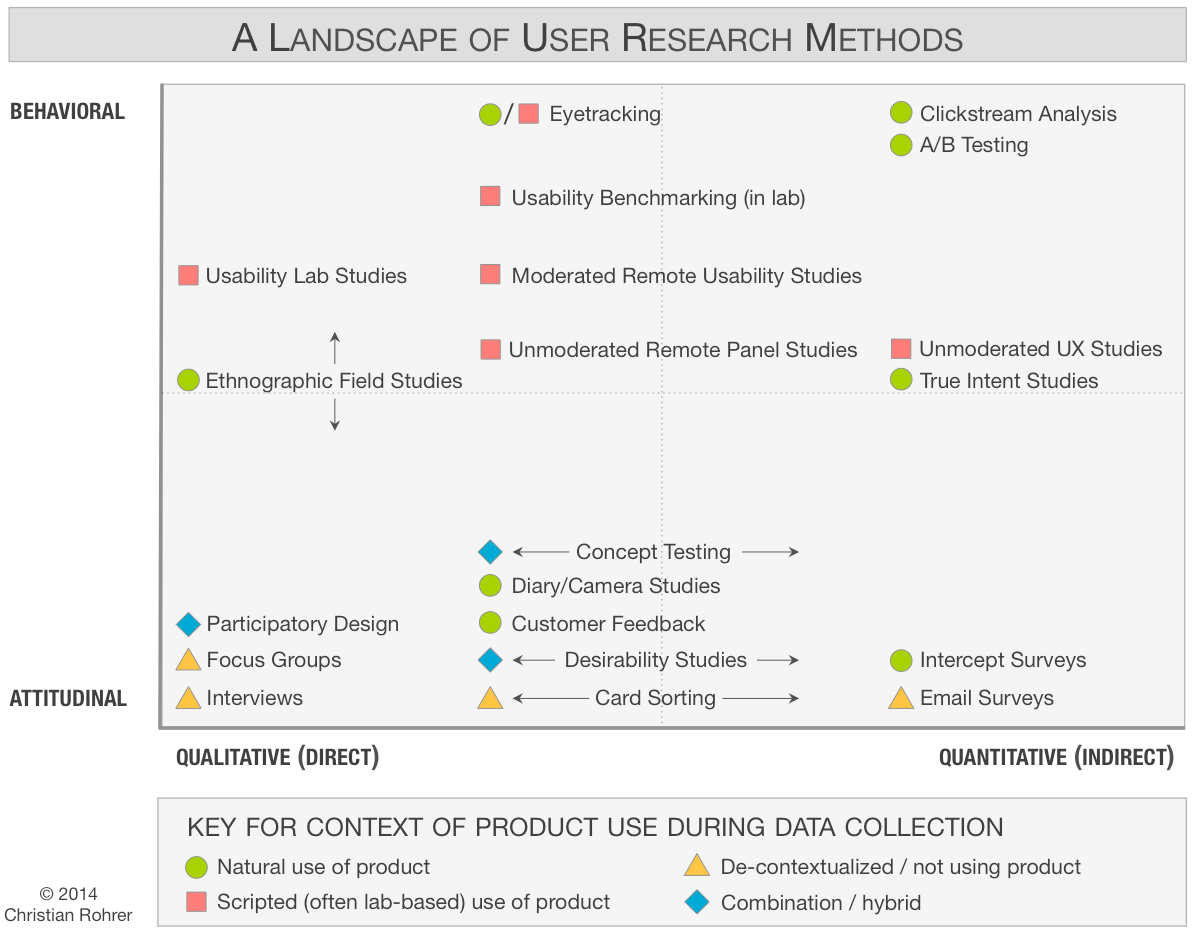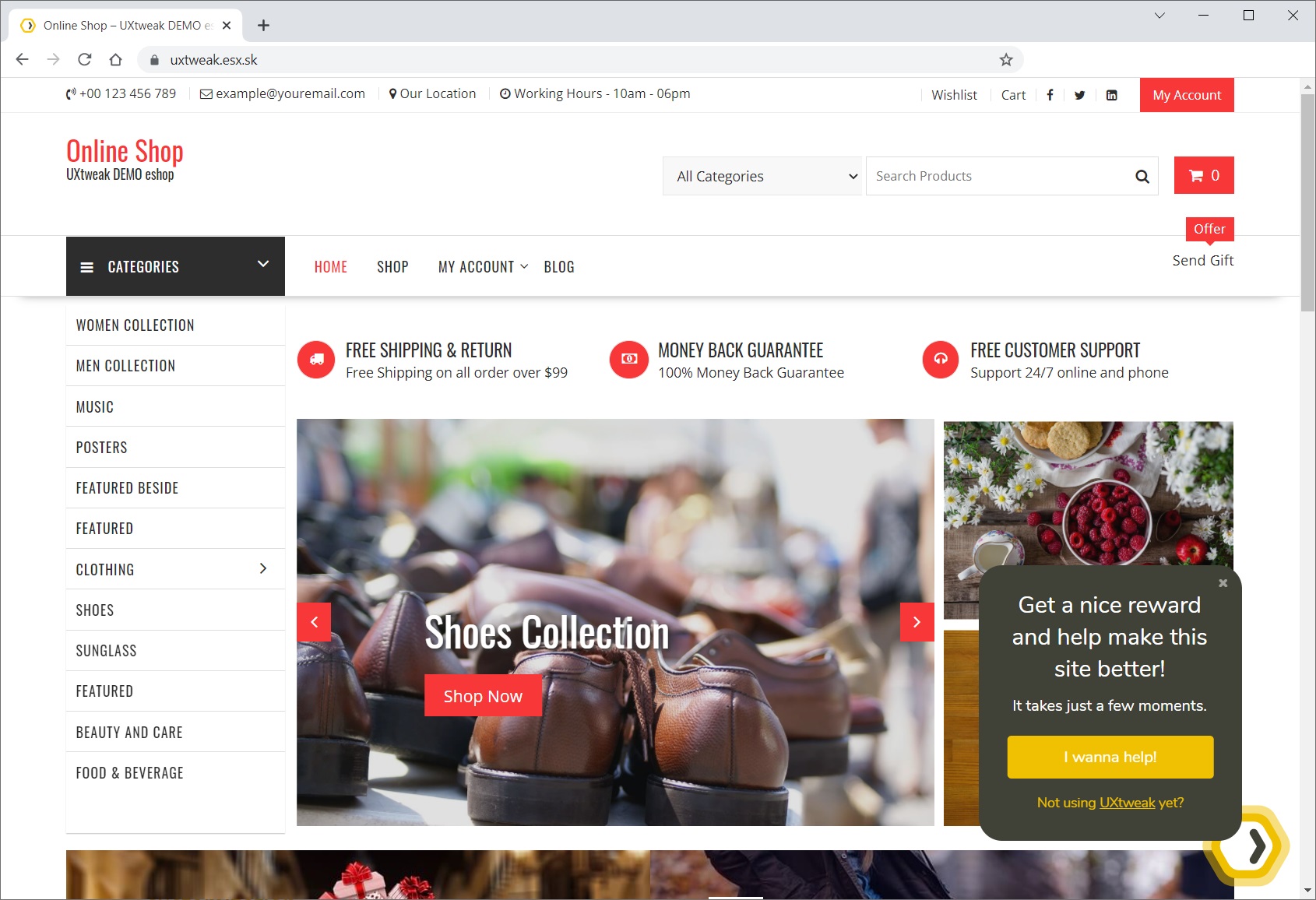Having a clear UX research process is key to having a system when collecting valuable insights during your studies and to approaching your research strategically. Continue reading as we explain what 6 steps you need to take in order to make the most out of your research, to keep it all organized and to not forget a thing.
6 stages of the UX research process
Define your goals
The first step in your UX research process should always be to define the goal of your study. The goal should be clear, concise and in-line with the problems which your business is trying to solve. Think about the reason why you’re starting the research in the first place.
Is it to gain information about user behavior before releasing the new feature or design element? Maybe you are introducing a completely new product to the market or trying to improve the old one?
Whatever it is, make sure you can formulate it clearly so that all the other teammates and stakeholders have no problem with understanding what you are trying to find out. The other thing to think about is how your research goal impacts other business objectives. Will it affect conversions or the revenue of the company?
Try to focus on one goal only, instead of setting a bunch of different ones. It will ease the analysis process for you and will make the process of measuring the research effectiveness a lot more sufficient. Ideally, formulate your goal in 1 sentence.
Choose the method
Once you’ve set your research goals, it’s time to choose what UX research method you are going to use to achieve them. The one you choose will depend on the kind of insights you are looking to obtain as well as the budget and the timing of your project.
There’s a wide variety of methods you can choose from. For most projects, you’ll need to get familiar with more than one in order to really understand the users and the reasons behind their behavior. Some methods can even be combined. When doing so, keep in mind how the different methods may affect each other. Also, participating in too many research activities at once can be cognitively taxing.
There are 4 different types of methods that correspond to different types of research goals. Depending on the type of insights you are looking for, you can choose from:
- Behavioral vs. Attitudinal methods
- Qualitative vs. Quantitative methods
In short, behavioral research methods help you find out how users interact with the product (what they do), while attitudinal methods help you gather their feedback, learn more about their problems, needs and opinions (what they say).
On the other hand, the difference between qualitative and quantitative methods is that qualitative ones answer the “why” behind users actions, while quantitative methods aim for the statistics and help you gather numerical insights.
Here’s a quick overview of all of the methods from NN/group:

Find out more about the UX research methods and their types in our UX research methods Guide.
Make a plan
In order to streamline the research process and make it easier for everyone involved to keep track of the data, you need to write a good UX research plan.
It contains all the important information about your studies, including their goal, methods, information about the respondents and stakeholders involved, as well as details such as schedule, budget and the project’s background. A plan is necessary to create a clear research strategy that everybody can follow and assure nothing gets forgotten.
Check out the handy guide we made on how to create a UX research plan and it will help you write your own!
Find the participants
The next step in your UX research process is figuring out who are going to be your research participants. Depending on the type and the stage of your product, you can choose to recruit from the general population or a specific target audience of yours.
We explain all the nuances of UX research recruiting in our article, check it out!
After you decide on that, you’ll need to find a place where to recruit those people. Here are some of the options:
- Newsletter – If you already have a user/customer base and an email list, you can just send out a newsletter with a link to your study, asking your base to help with your research.
- Social media – Either join an online community of like-minded people and ask them for a few minutes of their time or in case you have already some active following, post the study link on your own social media.
- On your website – This option becomes available thanks to an exclusive feature of UXtweak.Using UXtweak’s Recruiting Widget you can get participants directly on your own website by asking your own users and visitors to help with your study. You can even offer them a small reward as incentive.

- Online user panels – Finding people who match off your recruitment criteria can be difficult. Thankfully, there are plenty of online tools that do the recruiting for you. At UXtweak for example, we help you recruit targeted users from our 155M+ User Panel for as low as $6/respondent.
The above list still isn’t exhaustive. Since all you have to do to share your study to your respondents is provide them a link, there are plenty of other options to get participants for your research. If you’re using some of the methods where participant’s aren’t paid, don’t forget to offer a coupon or a discount on some of your products to motivate participants to complete the study.
Conduct the research
Now that you have all the details figured out, it’s time to dive deep into the research itself.
Whether your UX research is moderated or not, each participant should be properly inducted into your study by being given enough information to know what’s going on and what’s expected of them.
Conduct your studies depending on the research method used, asking participants questions or letting their actions speak for themselves. If testing, see how they interact with your products and think about how you can make those processes more intuitive. Focus on your goal and gather insights to achieve it.
You might need some good UX research tools to help you streamline how you conduct your research as well as the analysis. Check out our list of best UX research tools out there.
Analyze and communicate your findings, propose solutions
After a successful study, you’ll have a lot of data to analyze. A UX research tool like UXtweak does a good chunk of the hard work for you, analyzing the data from your studies automatically to provide you with comprehensive graphs, tables, aggregations, statistics and recordings.
Go back to your goals and keep them in mind to search for insights which are meaningful to you. What are the answers to your research questions? What can you deduce from the users’ own words and behavior?
If you’re testing something such as usability or concepts, watch for where users struggle, what your designs lack and think of how you can improve it. It’s important to prioritize your findings according to their severity and/or frequency. You’ll need to start the improvement journey with the most crucial ones, the ones which directly impact the users of your product most.
After you analyze the data and prioritize the most severe of issues and present your findings to the stakeholders. With UXtweak, you can even generate a handy PDF report of your UX research studies to help you present information in a comprehensive way. Explain what was the issue you’re trying to solve, what you found out and propose your suggested solutions. Use your findings to make informed design decisions and improve the usability of your product.

